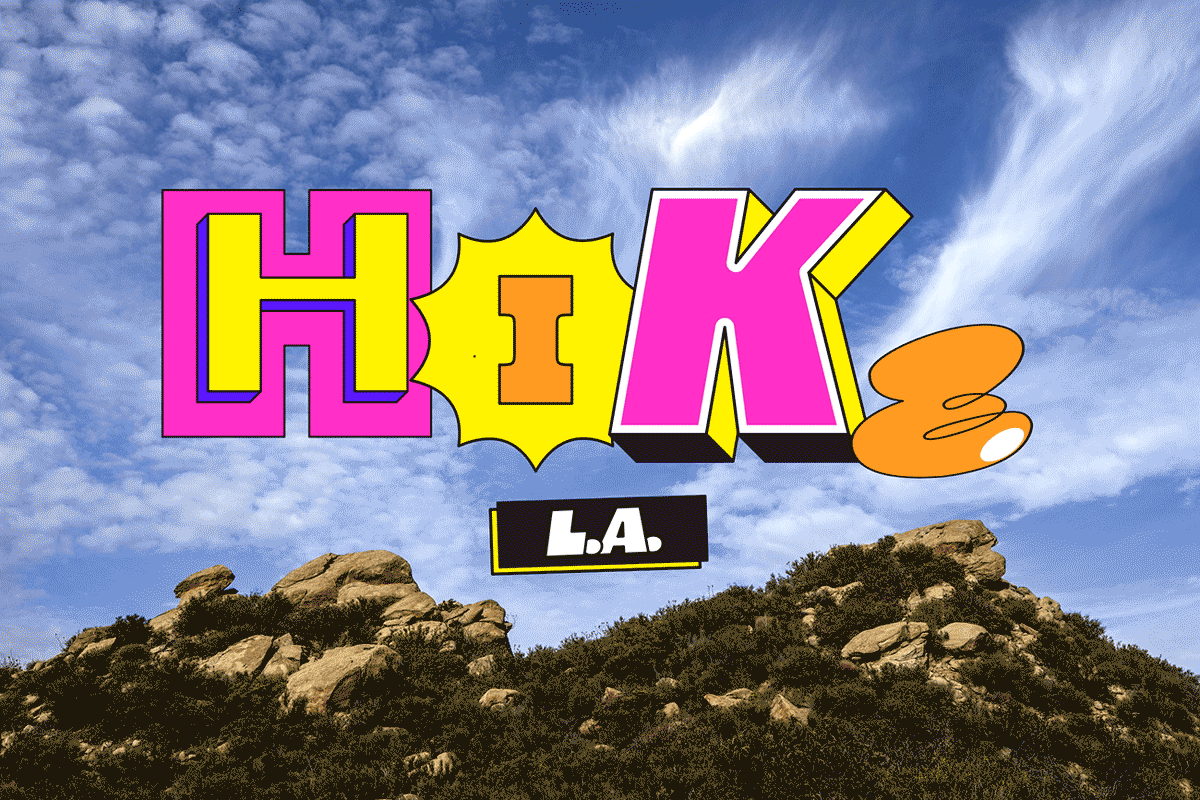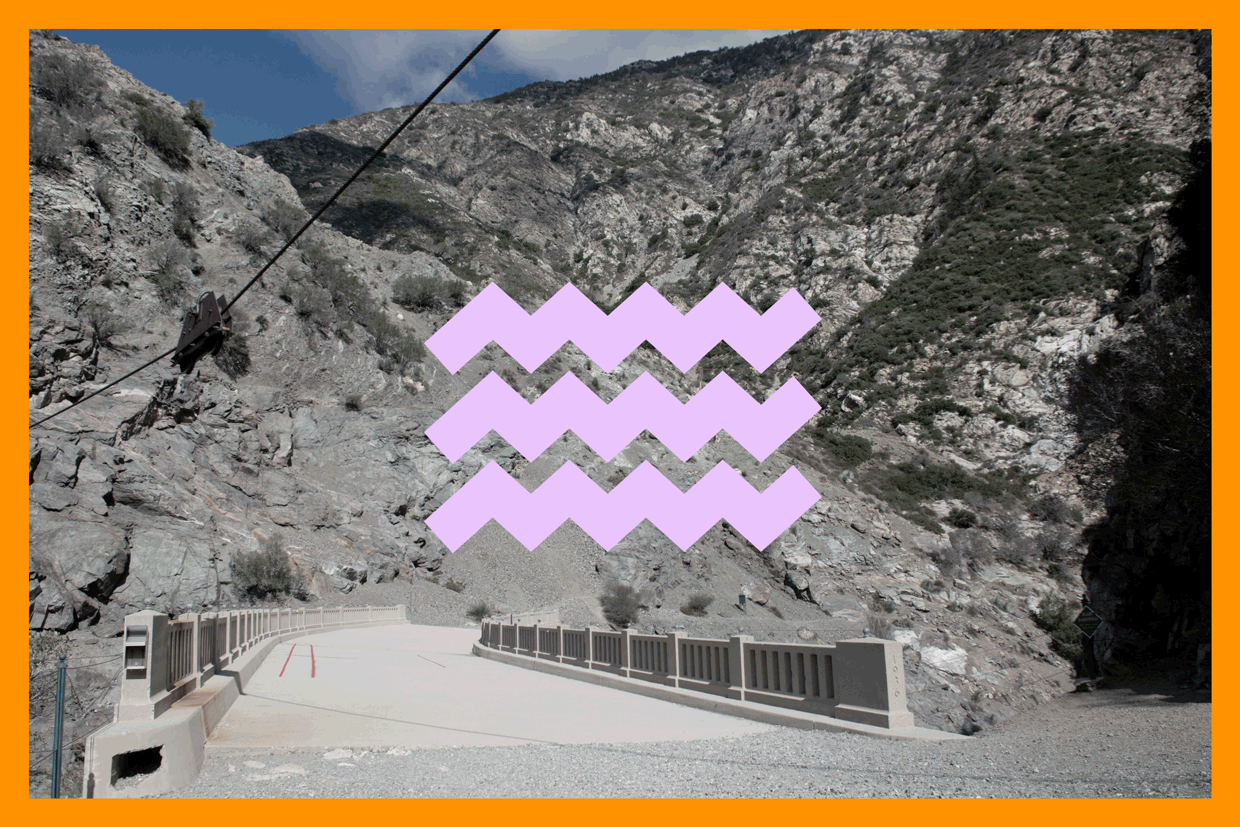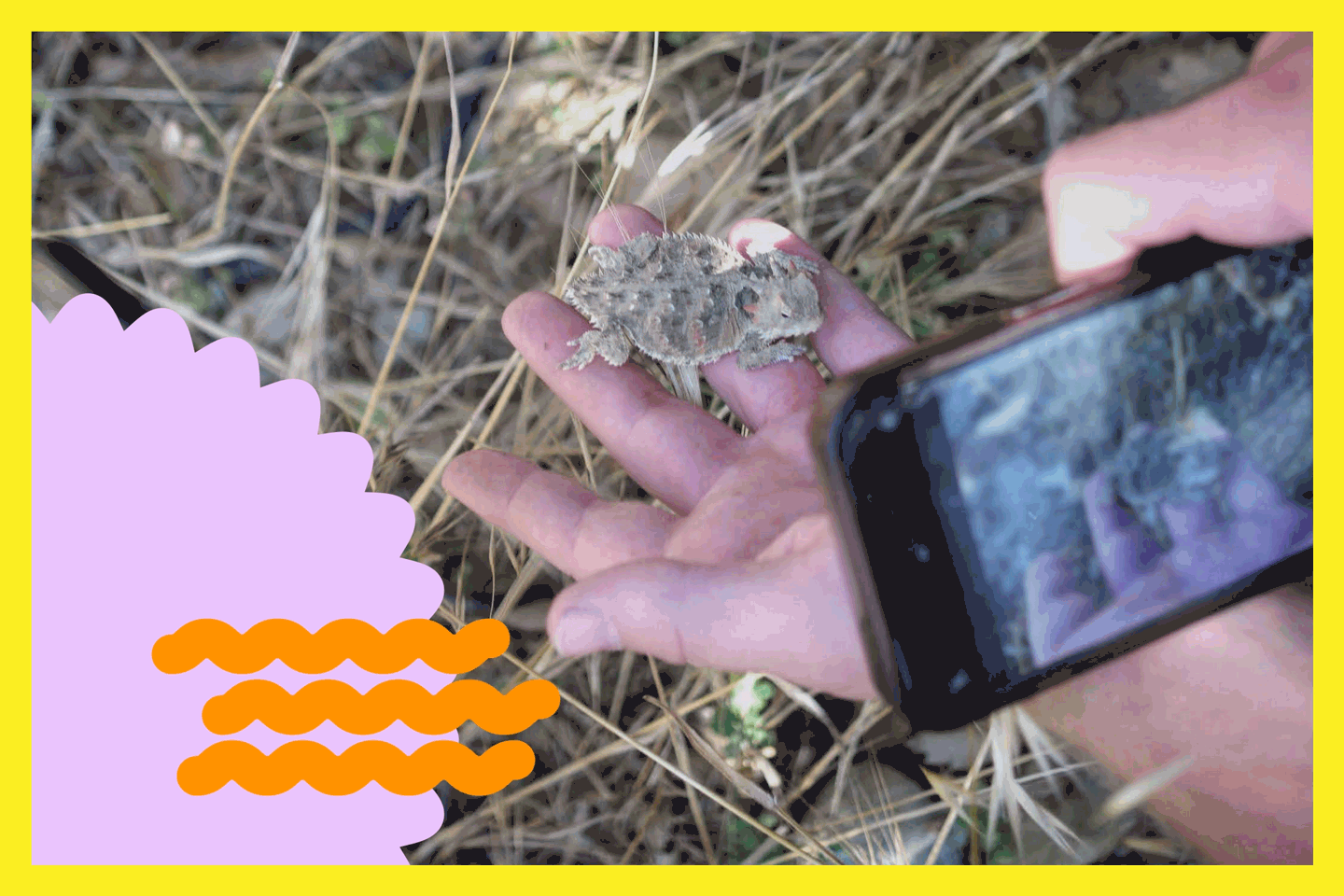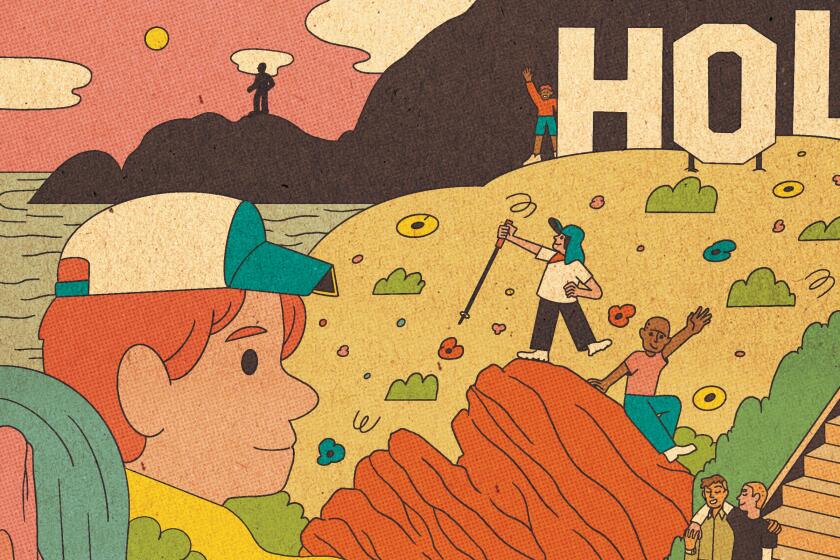These hiking trails are closed because of the Southern California wildfires

- The Bridge, Line and Airport fires have burned about 184 square miles of land in Los Angeles, Orange and San Bernardino counties, affecting many popular outdoor destinations.
- The Times pulled together data from mapping tool CalTopo and consulted forest closure orders to determine which hiking routes are closed or in the burn areas.
As firefighters complete the final steps to controlling three blazes around Southern California, it’s becoming clearer how and where hiking trails will remain closed for the foreseeable future.
Some trails have burned in the Bridge, Line and Airport fires and will take a long time to recover. Others are closed out of an abundance of caution.
The Times has put together a comprehensive list to help you understand where you can recreate responsibly, and also, whether your favorite areas were burned in recent blazes.
In the coming months, volunteer trail crews across L.A. County and beyond will head to these areas to help with recovery efforts. They are almost always in need of more volunteers.
To put together a better picture of the damage, The Times consulted mapping tool CalTopo, cross-referencing its maps and the fire footprints and forest closure orders with lists of local hiking trails to determine which routes were in the burn area. That said, just because a trail is in the burn area doesn’t mean it was destroyed. We’ll learn more about specific conditions of each trail in the coming weeks and months, as well as when trails might start to reopen.
Whether you’re looking for ocean views or desert landscapes or soaring mountain peaks, Los Angeles offers miles upon miles of strikingly different trails.
The Bridge fire | The Line fire | The Airport fire
The Bridge fire
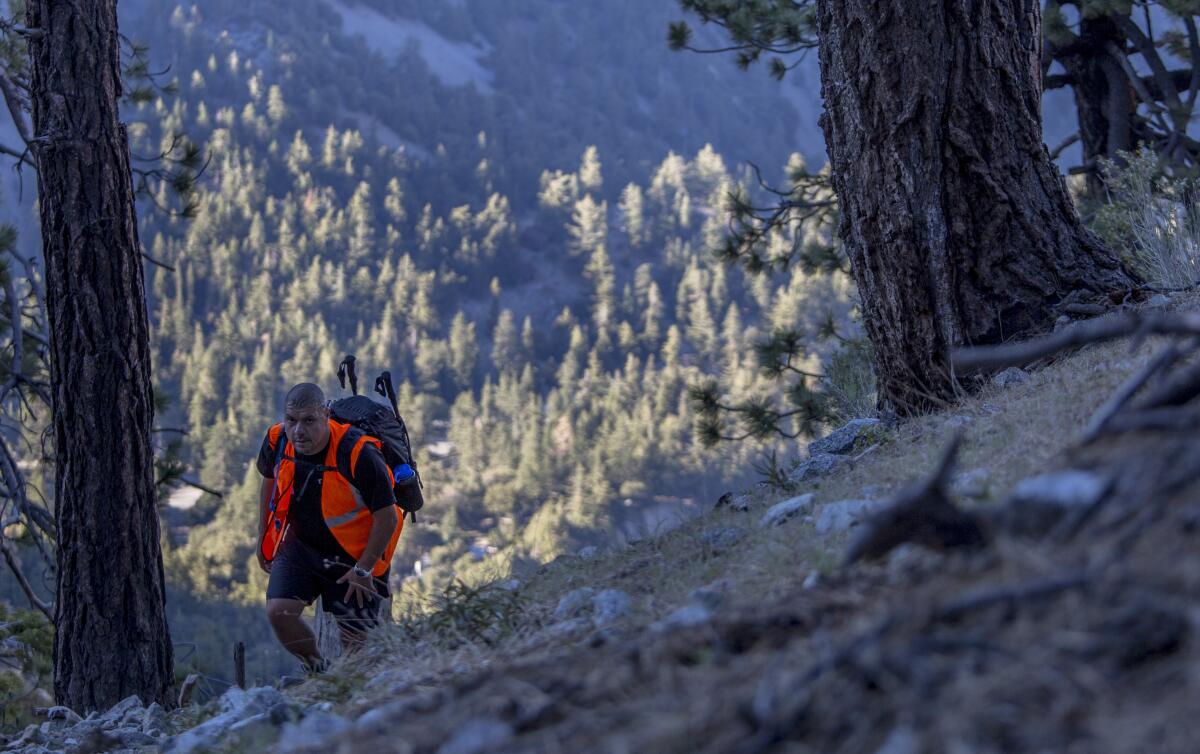
Almost 55,000 acres in the San Gabriel Mountains and nearby towns have been burned by the Bridge fire. That includes destroying homes and buildings in Wrightwood and the Mt. Baldy community.
As of Friday, the Bridge fire was 97% contained. Firefighters have completed a control line around the majority of the fire’s perimeter. But containment does not mean that the fire that has been extinguished. Wildfires can burn for weeks after full containment is reached and even after fire personnel leave if no risk remains to embers restarting a blaze.
On Sept. 21 , Angeles National Forest issued its Bridge fire closure order, which applies to federally managed roads, trails and other amenities. It is set to remain in place until Dec. 31, 2025, although that date could change.
Last week we cross referenced CalTopo, local trail lists and the Bridge fire map to tell you which trails appear to have been burned. Below you’ll find our updated list of trails that were burned by the fire and also those closed by the forest order.
📌 East Fork and Camp Williams area
The Bridge fire was named after Cattle Canyon bridge in the East Fork of Angeles National Forest, where it started.
Although the fire got close, firefighters were able to save Camp Williams Cafe & General Store and Camp Williams Mobile Home Park from burning.
However, the hiking trails below appear to have been affected, and unless otherwise noted, are closed:
- The Bridge to Nowhere Trail (also known as the East Fork Trail, burn area includes the bridge itself)
- Cattle Canyon Trail
- Rattlesnake Peak Trail
- Rattlesnake Peak Loop
- Shoemaker Canyon Road
- Devil’s Gulch Waterfall
- Iron Mountain via Heaton Flat Trail
- Bonita Peak via Heaton Flat Trail
- Heaton Saddle via Heaton Flat Trail
- San Antonio Ridge: The first 10 miles, when starting in the East Fork area, is burned; the trail from near West Baldy onward is not burned.
- Allison Mine Loop
- Gold Dollar Trail
Southern California is on fire again. If you’re still hankering to go outdoors, try these trails that are far away from the burned areas.
📌 Mt. Baldy area
The road to reach the mountain community of Mt. Baldy has reopened, and businesses are returning to normal operating hours.
Popular hiking trails, including Icehouse Canyon and Icehouse Saddle appear, via the fire map, to not have burned in the Bridge fire. Additionally, San Antonio Falls, Ontario Peak, Cucamonga Peak, Cedar Glen Camp, and the three T’s — Timber Mountain, Telegraph Peak and Thunder Mountain — also did not burn. Although the fire moved near Stoddard Peak’s trailhead, its trail was spared.
Here is a list of some of the popular trails that appear to have burned, according to The Times’ analysis:
- Old Mount Baldy Trail: The fire burned about 4.4 miles of the trail, starting near the trailhead, scorching almost half a mile of Bear Canyon Road and almost four miles of the Bear Canyon Trail
- Bear Flats via Bear Canyon Trail
- Lookout Mountain via Bear Canyon Trail
- Sunset Peak Trail
- Sunset Ridge Road
Additionally, these trails and sites do not appear to have been burned in the fire but are closed, per the closure order:
- Baldy Bowl Trail
- Devil’s Backbone Trail
- Mt. Baldy Trail
- Mt. Baldy visitor center interpretive site
- Mt. Baldy wayside picnic site
📌 Wrightwood and Vincent Gap area
Although the fire got within about 500 feet of the Mt. Baden-Powell trail, it was not burned in the Bridge fire. Additionally, nearby mountains, including Mt. Burnham, Throop Peak and Mt. Hawkins, did not burn. The immediate area surrounding Jackson Lake was not burned, but multiple trails in that area did. The Grassy Hollow Visitor Center was destroyed. Mountain High ski resort survived and aims to reopen later this year for its winter season.
- About 12 miles of the Pacific Crest Trail: The trail is burned starting about half a mile northeast of Vincent Gap, past the Grassy Hollow Visitor Center and Inspiration Point, until the trail skirts past Wright Mountain.
- Pine Mountain via Acorn Trail, Pacific Crest Trail and North Backbone Trail: the majority of the trail burned; the final 0.7 miles nearest Pine Mountain were spared.
- Big Horn Mine Trail: About the first half-mile did not burn, but the rest of the trail did, including the mine.
- Boy Scout Trail loop
- Ross Mountain via Vincent Gap: The trail is not burned until about 1.75 miles south of the Mt. Baden-Powell summit, when the final 1.25 miles to Ross Mountain is burned.
- Pinyon Ridge Nature Trail: The first mile doesn’t appear to have suffered damage, but later parts of the trail were burned.
- Inspiration Point to Grassy Hollow
- Inspiration Point to Snowmaking Pond Loop, via the Pacific Crest Trail and Blue Ridge Truck Trail
- Inspiration Point to Guffy Campground
- Prairie Fork Trail
- Big Pines Nature Trail
- Blue Ridge Trail
- Jackson Flat Interpretive Trail
- Jackson Lake Trail
- Mine Gulch Trail
Additionally, these trails and sites do not appear to have been burned in the fire but are closed, per the closure order:
- Dawson Saddle Trail
- Hawkins Ridge Trail
- Jackson Lake Interpretive Trail
- Mt. Baden Powell via Vincent’s Gap
- South Hawkins Trail
The Line fire

The Line fire, which is alleged to have been started Sept. 5 as an act of arson, has burned more than 39,000 acres in San Bernardino County. It damaged four structures and destroyed one. It has also injured four firefighters. As of Friday, it was 83% contained with “minimal fire activity” and favorable conditions for firefighting expected in the coming days.
Several hiking trails are temporarily closed under the San Bernardino National Forest’s Line fire closure order, which ropes off what The Times estimates to be about 70% of national forest land to the public and includes large swaths of the region that weren’t burned by the fire. The order includes all of the Front Country and Mountaintop Ranger districts, and trails near Lake Arrowhead and Big Bear, among many others that did not burn.
The closure extends beyond the fire’s perimeter because “the fire is not completely contained,” said Sonny St. John, a patrol captain with the federal Forest Service’s Law Enforcement and Investigations unit on the San Bernardino National Forest. “We want to limit using resources on other parts of the forest where incidents could also occur.”
No one wants to be on their phone while out enjoying nature, but using apps like iNaturalist and others can maximize, not distract, from the experience.
You can find a list of every trail and road closed here. In short, any trail in the San Bernardino National Forest that’s outside of the San Jacinto Ranger District — which sits south of the 10 Freeway and includes the Idyllwild area — is closed.
St. John said the order could be adjusted in scope and size, or terminated, as conditions allow. In the interim, it’s best to call ahead before visiting the area to determine whether the hiking area you’d like to visit is open.
Below you’ll find a list of trails that, based on The Times analysis, were burned by the fire.
Note: Just because a trail is listed doesn’t mean it was destroyed. There aren’t data available yet to discern how severely burned each trail was. This is a preliminary list, based on the Line fire burn map.
- Shelton Trail
- Plunge Creek Truck Trail: The first half-mile was not burned, but the rest was.
- Highland Natural Parkland Trail
- Exploration Trail: About 1.3 miles of the middle section burned
- Keller Peak Road and Keller Peak Fire Lookout: The last mile of the road leading to the peak, south of Keller Peak yellow post No. 9, appears to have burned; the 98-year-old lookout tower at the peak was destroyed
- Mill Peak Trail: The majority of the trail did not burn, but the fire got close to the peak; about a quarter-mile of trail burned, depending on the exact route you take.
- The Redlands R: An unofficial trail off City Creek Road to the iconic letter on the mountainside; the fire map shows the R, estimated to be 415 feet tall by 275 feet wide, in the burn area
- Santa Ana Divide Trail to Alder Creek Fire Road
- Alder Creek Trail 2W18
- Lower Santa Ana River Trail: The first mile does not appear to have burned. Just after the first mile, the fire burned the trail until just after Morton Peak, where there is a 1.8-mile stretch northeast of Morton Peak that wasn’t burned. There’s then another stretch, just under five miles, that’s burned until the trail nears Constance Peak, where the burn area ends north of Angelus Oaks. The remaining 23 miles from near Angelus Oaks east to the Pacific Crest Trail was not burned.
- Siberia Creek Trail: The most popular section of this trail — starting near the Bluff Lake Reserve and heading west to Gun Sight Rock — did not burn. But 1.5 miles southwest of Gun Sight Rock, the trail is burned for about three miles until it ends near Bear Creek. This section of the trail, per the forest service, has not beenmaintained for many years.
- Camp Creek National Recreation Trail: The last half-mile appears to be in or near the burn area, where it ends at Bear Creek.
- Constance Peak Trail: Although not an official forest service trail, hikers may trek about two miles from Angelus Oaks along Thomas Hunting Grounds Road (1N12), which did not burn, before heading off trail to Constance Peak. The off-trail route that hikers have previously taken might have burned, as there is a burned section west of the peak.
Popular attractions, including the Trail of the Phoenix in the National Children’s Forest, Little Green Valley Trail and climbing spot Dinosaur Rocks, did not burn. The Shady Cove Group Campground in the Children’s Forest was also spared. And the fire got close but did not destroy the Bluff Lake Reserve, where firefighters have quickly extinguished spot fires threatening the 80-acre reserve. The Morton Peak Fire Lookout suffered some damage but was not destroyed, per a Southern California Mountains Foundation representative.
From TikTok-famous nieces to birding besties, this list will help you choose the right L.A. hike for just about every type of visitor.
The Airport fire

The Airport fire, unintentionally started by workers using heavy machinery to move boulders, has burned almost 24,000 acres since it began Sept. 9 near Trabuco Canyon in Orange County. It destroyed 160 structures, including several homes in El Cariso Village, and damaged 34 others. An estimated 22 people, including firefighters, have been injured. As of Friday, the fire was 95% contained.
Cleveland National Forest — where much of the fire has burned — issued a closure order that bars the public from entering the 138,971 acres of the Trabuco Ranger District, an area far larger than the fire’s footprint. All trails in the district are closed to the public. A list of closed trails and roads is available here. The order is set to expire Sept. 17, 2025.
Below you’ll find a list of trails that, based on The Times analysis, were burned by the fire.
Again, just because a trail is listed doesn’t mean it was destroyed. This is a preliminary list, based on the Airport fire burn map.
- Modjeska and Santiago Peak via Maple Springs and Main Divide Loop: The first half-mile did not burn, but the trails leading to both peaks did.
- Falls Canyon, off the Trabuco Creek Falls Canyon Trail.
- Holy Jim trail to Holy Jim Falls.
- Holy Jim trail to North Main Divide road: The majority of this trail was burned.
- West Horsethief Trail: Although the first half-mile near the trailhead was burned, the rest of the trail heading to North Main Divide Road was spared.
- Trabuco Peak via Trabuco Creek, West Horsethief and North Main Divide Road: Starting at the end of Trabuco Creek Road, the first half-mile along Trabuco Creek Trail is burned. The rest of Trabuco Creek Trail, and West Horsethief to North Main Divide Road to Trabuco Peak was not burned.
- Trabuco Canyon Trail: The area immediately around the Trabuco Canyon trailhead at Munhall Saddle was burned, but the 2.5 miles of the Trabuco Canyon Trail leading northwest to an intersection of the Trabuco Creek Trail and West Horsethief Trail did not burn. Heading west, the first 1.2 miles of Trabuco Creek Trail did not burn while the last half-mile (nearing where the fire is believed to have started) did.
- Upper Hot Spring Canyon to Falls Trail.
- Falcon Trail
- San Juan Trail: Starting at its upper trailhead near Blue Jay Campground, this trail is burned from its start to just past both Sugarloaf peaks. A 4.5-mile section of it due south of Sugarloaf Peak to its lower trailhead on Hot Spring Canyon is not burned.
- Chiquito Trail: Starting near the Ortega Oaks 74 Candy Store and Goods, the trail is not burned for four miles, until it reaches near Chiquito Falls, which appears to be in the burn area. The rest of the trail is burned.
- San Juan Trail to Sugarloaf Peaks: Starting at the trailhead just south of the Lazy W Ranch Camp off Hot Spring Canyon Road, this trail takes hikers northeast to Sugarloaf and New Sugarloaf Peaks. The first 4.5 miles did not burn, but the area surrounding both summits did.
- San Juan Trail to Los Pinos Trail Loop: Its trailhead just south of Lazy W Ranch Camp, the majority of this 21.6-mile loop was burned. It is not burned for 4.5 miles of the San Juan Trail at its start, or finish, and about 2 miles of the Los Pinos Trail in the same area.
- Los Pinos Peak via Bell View Trail: The majority of this trail — also called Bell Ridge on maps — burned, including near the peak. The first mile from the trailhead appears not to have burned.
- El Cariso Nature Trail
- El Cariso Truck Trail: The final mile of this trail is burned.
The Airport fire did not reach the Ortega Oaks 74 Candy Store and Goods, a popular stop for hikers headed to nearby trails, including Sitton Peak, which did not burn. Ortega Falls also appears to have been spared, sitting only about 240 feet south of the fire’s eastern flank. The fire remained far from the popular Black Star Canyon waterfall. Additionally, the popular Bedford Peak trail was not burned.
Did we miss a trail? Or do you have a question about your favorite spot? Please email Times outdoors reporter Jaclyn Cosgrove, who can update the list accordingly.
More to Read
Sign up for The Wild
We’ll help you find the best places to hike, bike and run, as well as the perfect silent spots for meditation and yoga.
You may occasionally receive promotional content from the Los Angeles Times.
